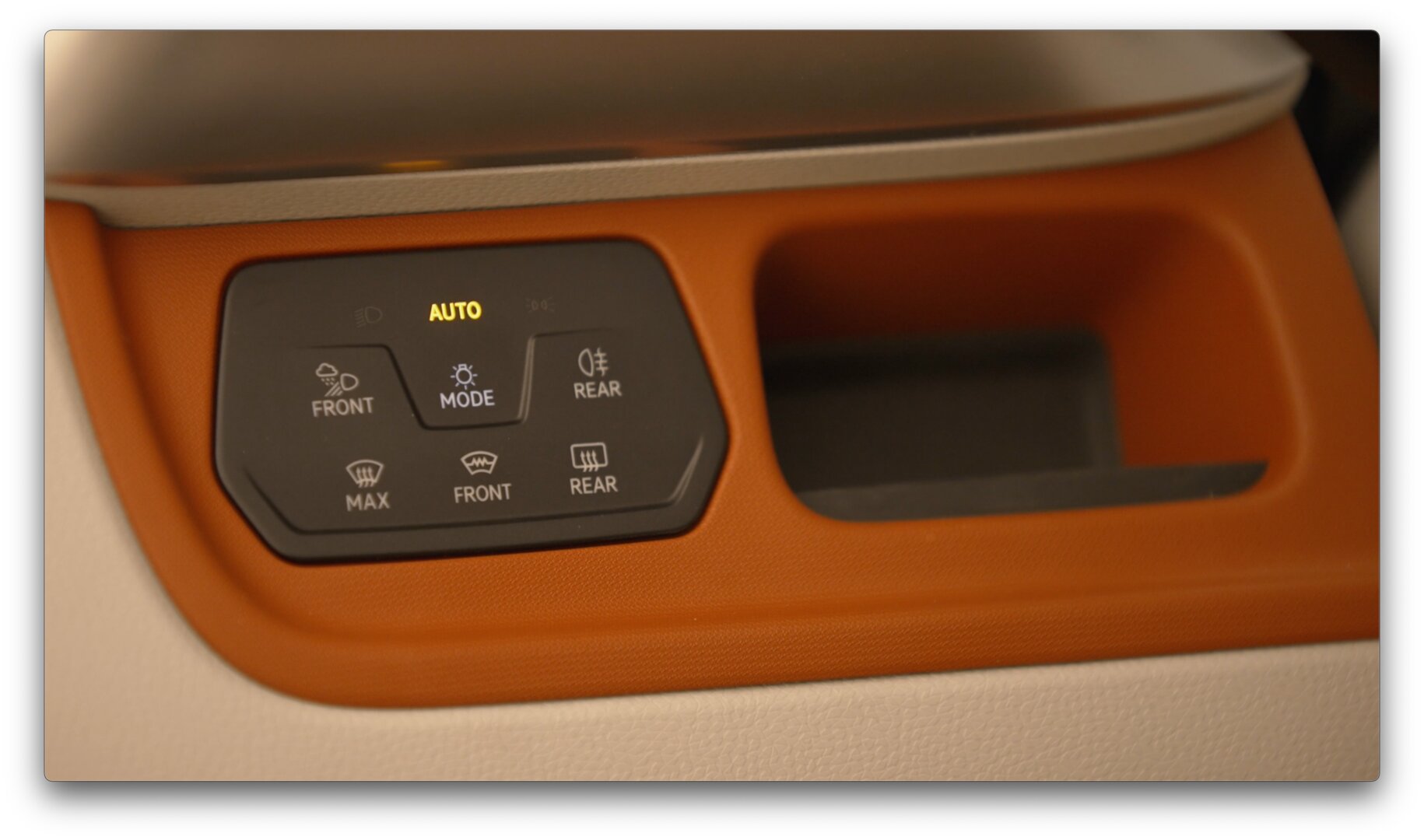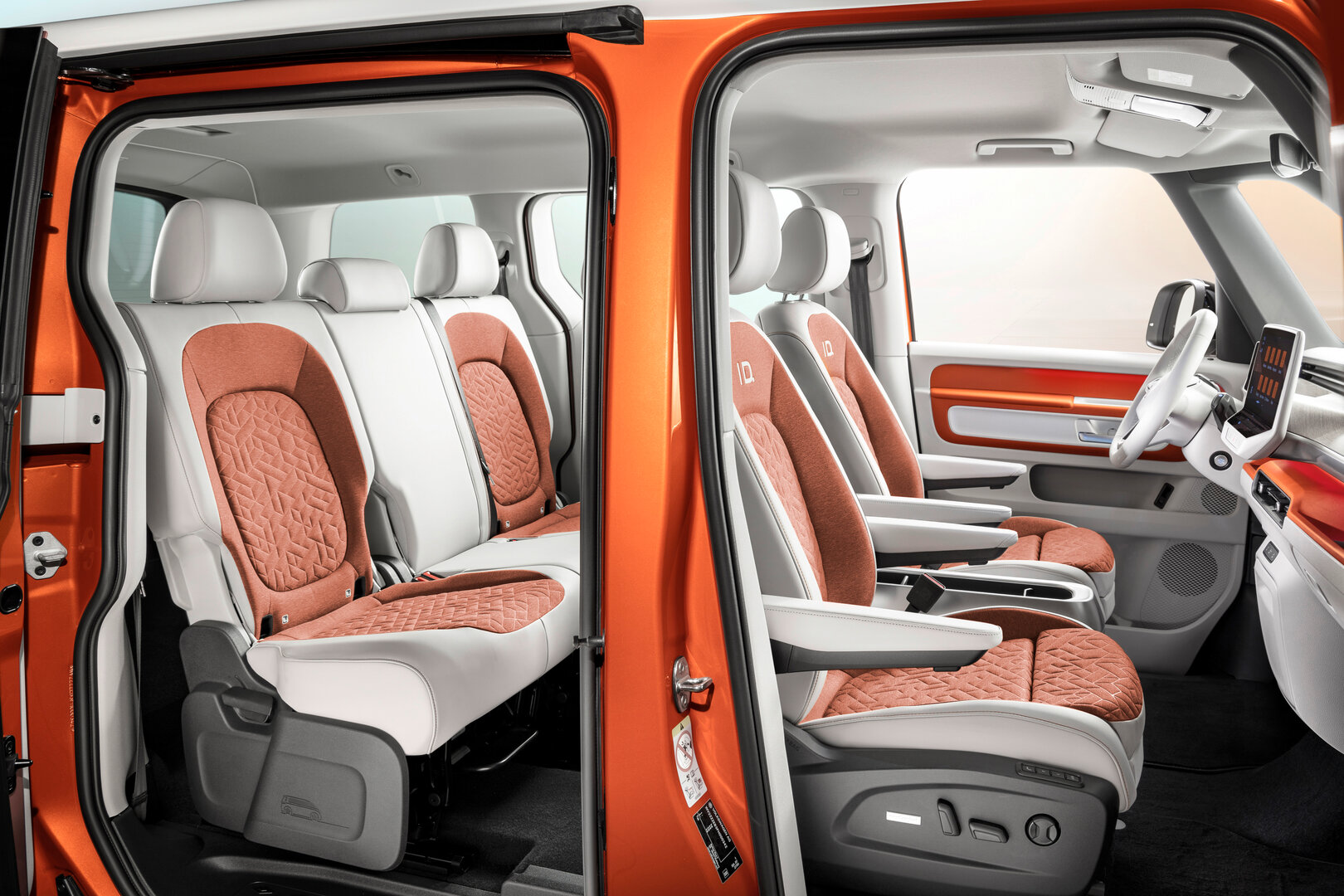ID Buzz and ID. Volkswagen’s Buzz Cargo is celebrating its premiere. Computerbase takes a look at the technology of the new, purely electric bus, which not only brings Car2X-like connectivity for nearby warning messages, but also brings extras to the interior, such as eight USB-C to mobile devices to the port.
Digital Display with App-Connect Wireless
With a length of 4.712 m and a wheelbase of 2.988 m, the ID. Not only is the Buzz up to 1,121 liters of luggage volume (2,205 with a second row of seats) with classic two-tone paint, but also a purely digital display. These include a 5.3-inch display in front of the driver and a central touch display for the infotainment system. The standard system “Ready 2 Discover” is equipped with a 10-inch touchscreen, the optional navigation system “Discover Pro” with a 12-inch screen. Even in the original version of ID’s infotainment system. Buzz is offered online services “We Connect” and “We Connect Plus” as well as “App-Connect”, which includes “App-Connect Wireless” and digital for smartphone connections via Apple CarPlay and Android Auto. Includes DAB+ for radio reception. Since the displays are enclosed only in the lower area, the impression should be made as if the infotainment system’s display was a free-floating tablet in landscape format.
Touch the sliders for Temperature and Volume
Under the infotainment system, VW relies on a control panel with digital buttons and touch sliders to control the interior temperature and volume – the touch controls on other VW models haven’t generated excitement among all buyers, which is why That many customers opt for the real back button or knob.
Up to eight USB-C ports and inductive charging
The Bus version is equipped with eight USB-C interfaces: two USB-C ports and a tray for a smartphone with inductive charging function integrated on the right side of the steering wheel. Another USB-C interface is located in the rear-view mirror mount, in the passenger door and at the base of the equipment. ID behind. The Buzz has USB-C connections on the left and right in the two sliding doors and in the load compartment. In the basic version of the smallest model, three USB-C ports are always installed on the front, but none at the back. on ID. Buzz is offered with up to five USB-C ports.
Travel Assistance with Swarm Data and Park Assist Plus
When it comes to support systems, ID. Buzz includes Park Assist Plus with memory function for automatic parking on a pre-saved route, Car2X for warnings and hazard reports in the immediate vicinity, and the latest version of Travel Assist with Swarm data usage. The Travel Assist System with Swarm Data enables partially automatic lateral and longitudinal guidance within range of the entire speed range up to a controlled maximum speed of 145 km/h and, for the first time, 90 km/h in the auxiliary lane on the motorway Change. If swarm data is available, Travel Assist only has to rely on a single recognized lane limit to remain in the lane – for example on country roads without middle lane markings. In total, Volkswagen will develop more than 30 support systems for the ID. proposal discussion. Available from the beginning the “Pro” Equipment version includes refractive assist and turning assist, Car2X, a drowsiness detection system, “Front Assist” emergency brake assist with pedestrian and cyclist detection, in conjunction with “Front Assist” Active Occupancy Protection System”, and “Lane Assist” Lane Departure Warning System. And this includes traffic signal recognition.
Even with ID. Buzz, software updates can be imported as over-the-air updates to update up to 35 control units.
IQ Lite, ID. lighting and ambient LEDs
ID Buzz uses LEDs for headlights and lighting. LED headlights at the front can be exchanged for “IQ.Light” LED matrix headlights for an additional fee. An LED strip connects the headlights to the front. The same applies to LED taillights. In conjunction with moving matrix headlights, ID. Buzz an interactive welcome and farewell light. The interior, on the other hand, has an “id”. “Light”: A narrow band of light in front of the windscreen in the driver’s field of vision, which displays information such as obstacles in color. ID Buzz is also equipped with 10-color ambient lighting as standard. As an option , Volkswagen will introduce a 30-color variant. Two different colors can be combined for different areas, and you can also choose from pre-configured lighting profiles.
77 kWh battery for Europe
At launch, the European versions will start with a 77 kWh battery (gross energy content: 82 kWh). It supplies power to a 150 kW electric motor that drives the rear axle. Charging power is 11 kW when using alternating current. According to Volkswagen, the charging power is increased to 170 kW via the CCS plug on the DC fast charging station, so that the battery can be charged from 5 to 80 percent after about 30 minutes. Information about the range of IDs. VW is not in discussion yet.
Plug and charge for communication with the charging station
The ID authenticates itself through “Plug and Charge”. Buzz through the charging plug at the appropriate fast charging stations (DC/Direct Current) thus exchanging all necessary data with the charging point. This is done through encrypted communication in accordance with the ISO 15118 standard, which no longer requires a charge card for payment. Billing is based on a “We Charge” contract with Volkswagen. “Plug and Charge” will be used in the networks of Ionity, Aral, bp, Enel, EON as well as Iberdrola and Eviny. Other providers have to follow.
Like all models in Volkswagen’s ID family, the new ID. Buzz and ID. Buzz Cargo is technically based on the group’s Modular Electric Drive System (MEB), which is to be replaced group-wide by a Scalable Systems Platform (SSP) in 2026 with Project Trinity.
bidirectional charging starts
ID Buzz and ID. Buzz Cargo will also support bidirectional charging from the start, with the e-cars supplying the electricity they do not need in the home network (vehicle-to-home) and thus stabilizing the electricity grid in the future. can provide electricity. ID with a 77 kWh battery. All other models in the family will also be able to charge bidirectionally in the future. This technology will be gradually available through over-the-air updates for vehicles that have already been delivered. For this the power transfer and communication takes place through a special DC BIDI wall box.
Sales start in May, delivery in autumn
The id Buzz, whose design is based on the T1, will be delivered in Europe this autumn in a “Pro” equipment version, with a sales launch planned for May 2022. In Germany, deliveries are scheduled to begin in September 2022, shortly after IAA. VW has not announced the prices in advance. A version with a longer wheelbase is to follow later, as are six- and seven-seat configurations. A North American debut with a particularly long wheelbase is planned for 2023, with sales there from 2024.
Computerbase got information about this item from Volkswagen under NDA. The only requirement was the earliest possible publication date.

Reader. Organizer. General creator. Zombie fanatic. Alcohol advocate. Food junkie. Bacon ninja.















